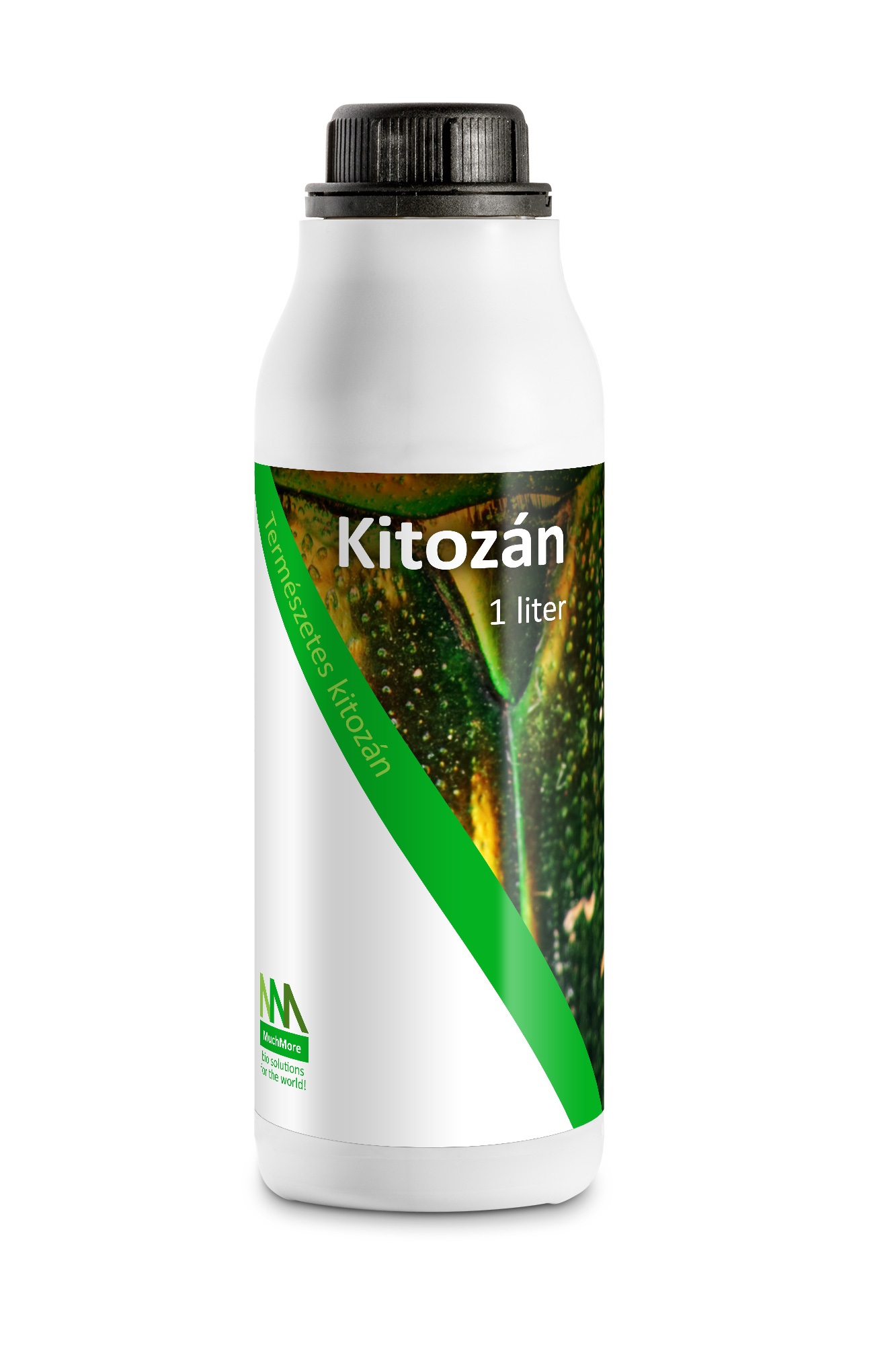Chitosan 1 l
| HUF 10,623 * (nettó: HUF 8,365) | |
What does Kitosan work against?
- It activates resistance in a natural way. It is an elicitor, i.e. it stimulates the immune system.
- Accelerates regeneration processes
How it works:
- It increases the levels of enzymes involved in growth and defence (chitinase, peroxidase).
- Improves lignification of cell shape, thus creating stronger tissues.
- Chitosan helps the attachment of mycorrhizal fungi.
Dosage:
- 50 ml/10 litres of water.
- An excellent addition to any antifungal formulation. Of particular importance in improving drought tolerance. It facilitates the attachment of mykorhizza fungi.
In which horticultural crops can it be used?
It can be used in all horticultural crops, both in the open and in indoor cultivation.The dose is determined according to the risk of infestation and the intensity of the infestation on the plant.
In vegetables:
Sprays can be applied from the petiole stage until full crop maturity.
In cucumber:
Against powdery mildew (Podosphaera xanthii, Golovinomyces cichoracearum)2-6 times with a minimum spray interval of 5 days.
In lettuce:
Against powdery mildew (Golovinomyces cichoracearum) 2 times with a minimum interval of 7 days,
In tomatoes:
Against tomato leaf blight (Phytophthora infestans) and Alternaria cichorii (Alternaria cichorii) 2-6 times with a minimum spray interval of 7 days.
For vegetables, the recommended dosage is 60 ml/10 litres of water.
In ornamentals:
In roses in particular, treatments against powdery mildew and other fungal diseases should be carried out 3-12 times with a minimum spray interval of 5 days. In this case, however, only a low concentration (20 ml/10 litres of water) in the morning or evening is recommended.
In organic fruit production:
In apples:
Against powdery mildew (Podosphera leucotricha) and against leaf blast (Taphrina deformans) in peaches for the protection of mixed and leaf bud swellingmay be used from 3 to 12 sprays,
with a minimum spray interval of 5 days, until the end of fruit growth. A concentration of 50 ml/10 litres of water is recommended.
In grapes:
For the control of peronospora (Plasmopara vita cola) and powdery mildew (Erysiphe necator), sprays should be applied before the beginning of leaf development.The spraying should be carried out 3-12 times, depending on the risk of infection, with a minimum interval of 5 days.
A concentration of 40-50 ml/10 litres of water is recommended.
When and how often to apply:
- As a complement to fungicide treatments or immediately prior to fungicide treatments every 7 to 14 days.
As it cannot be mixed:
- It can be mixed with any substance that does not form a precipitate in aqueous solution. It is advisable to carry out a mixing test
with it first.
| Weight: | 1 kg |
|---|---|
| Width: | 90 mm |
| Height: | 90 mm |
| Length: | 250 mm |
| Aviability: | 1-4 nap |
| Basic sales unit: | db |
| Culture: | Díszkert, Dísznövény, Gyümölcs, Pázsit, Szobanövény, Szőlő, Zöldség |
Login
Login
